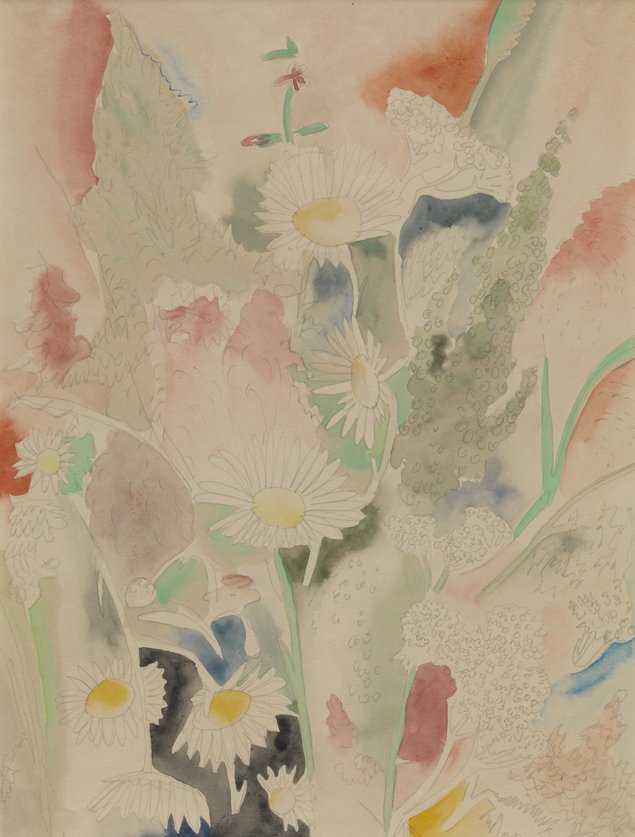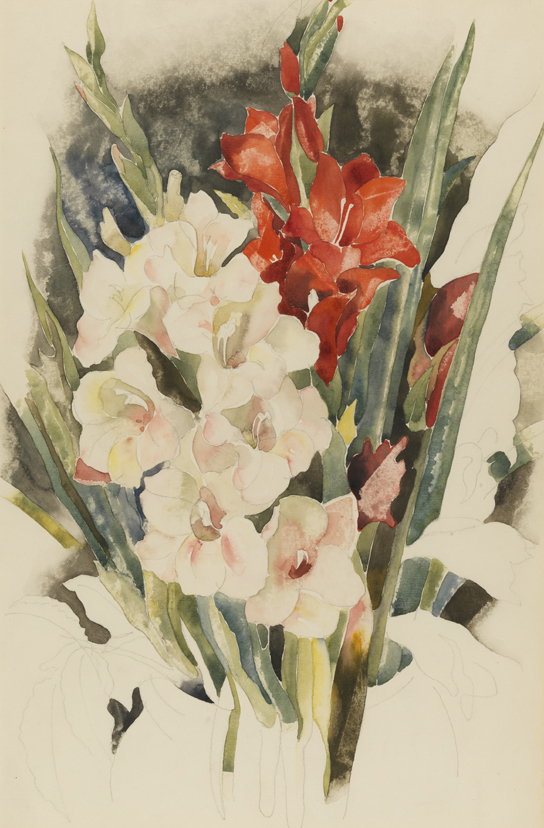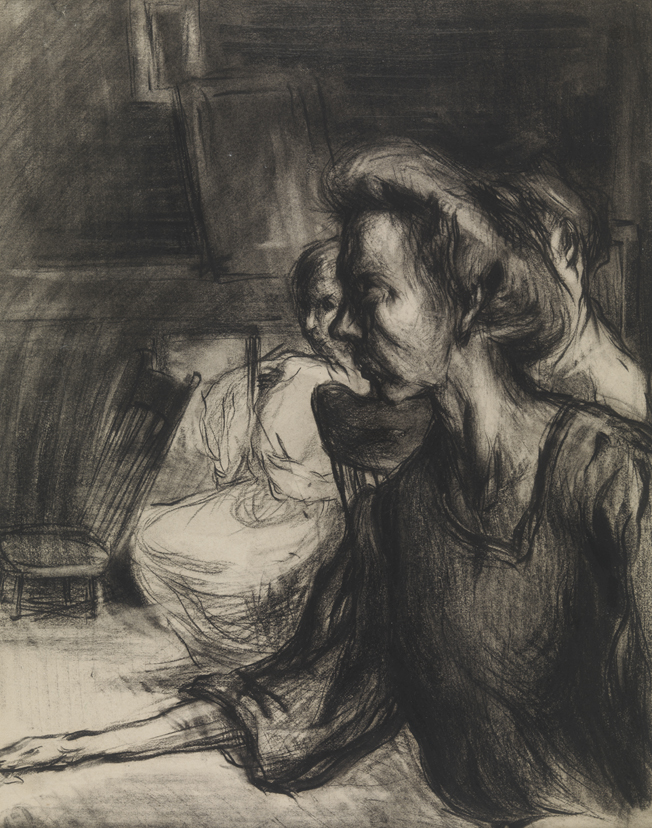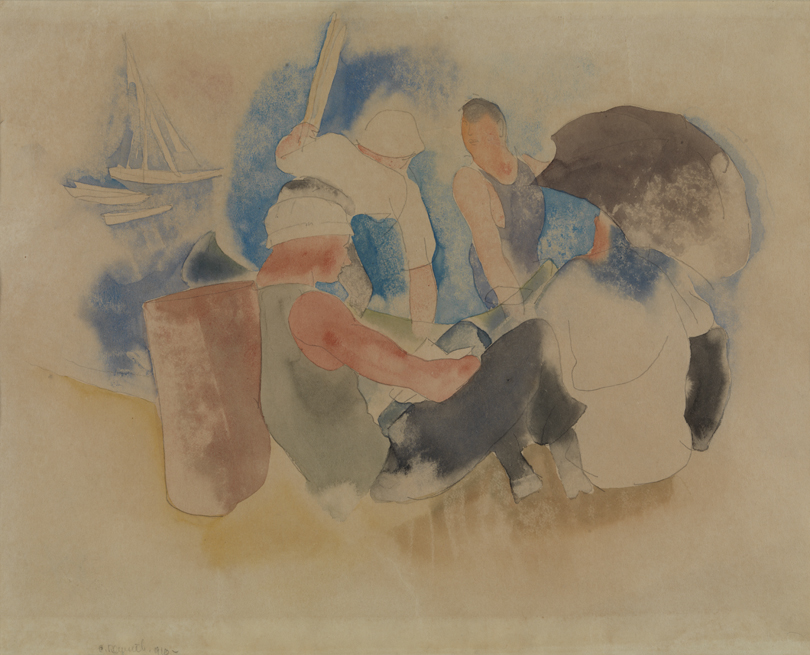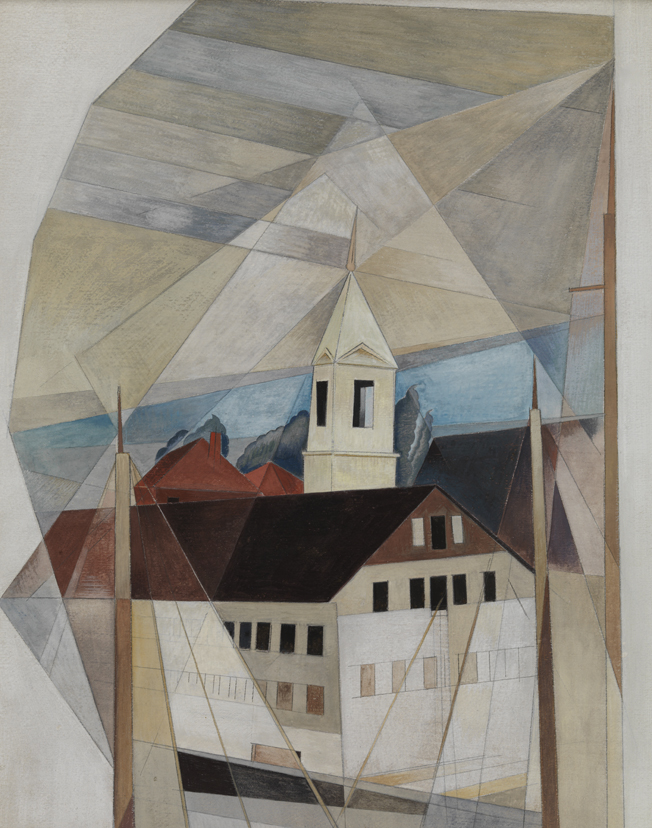
Box of Tricks
Charles Demuth
Charles Demuth spent the summer of 1919 in Gloucester, Massachusetts, where he devoted his time to painting outdoor architectural themes, such as "Box of Tricks." An active member of the New York avant-garde, Demuth was intimately aware of the latest modernist trends. In this work, Demuth appropriated Cubism, with its multiplicity of viewpoints and fragmentation of form. He created a linear precision by extending the lines of his buildings and masts into space. Angular lines join to create geometric facets the reflect light and imply various experiential perspectives. While Demuth worked in watercolor and graphite on a small scale, his Precisionist style reflects the importance of industry and the influence of the machine.
Born in 1883 to an affluent patrician family in Lancaster, Pennsylvania, Demuth never needed to work for a living. From 1905 to 1910 he studied at the Pennsylvania Academy under Thomas Anshutz and William Merritt Chase. He made two extended trips to Paris, the first in 1907 and a second from 1912 to 1914, when he fell under the tutelage of Marsden Hartley and a wide circle of American expatriate artists and writers. It was not until his return to New York in 1914 that Demuth embraced modernism. A consummate watercolorist, Demuth and Charles Sheeler pioneered Precisionism, which celebrated the American industrial landscape.
Artist
Date of Birth
(1883-1935)
Date
1919
Medium
Gouache and graphite on cardboard
Dimensions
19 7/8 x 15 7/8 in. irr. (50.4825 x 40.3225 cm.)
Accession #
1984.8
Credit Line
Acquired from the Philadelphia Museum of Art in partial exchange for the John S. Phillips Collection of European drawings
Copyright
No known copyright restrictions
Category
Subject
We're so excited you're planning to visit PAFA!
Make time for art — visit us Thursday to Sunday.
Before reserving your tickets, please review helpful information about museum hours, accessibility, building access, and special admission programs.
If you have any questions, feel free to reach out to us at visitorservices@pafa.org — we’d love to help!
